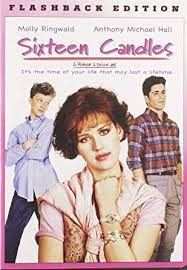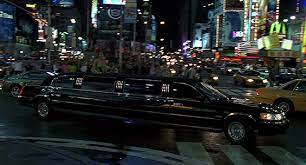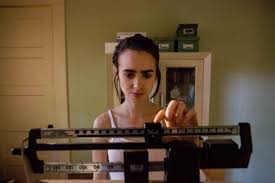Critical Reflection
The key audience and social group I intended my film to touch the most were teenage girls. As a fellow teenage girl, there are experiences that are a direct product of the "teenage girl experience," and I wanted to curate my film to primarily represent that group through the key conflict of infidelity. The film I made is called Our Boyfriend to represent the love triangle rooted in infidelity between Laura, Jasmine, and Joseph. The dynamic showcases a girl who is madly in love with her boyfriend, Joseph; their love is a reflection of typical high school "first loves," who are naive to challenges such as infidelity. Laura one day finds out her boyfriend, whom she loved so much, was cheating on her with Jasmine. This circumstance turns Laura cold. She is determined to team up with Jasmine to make sure Joseph is aware of the pain he has brought upon her. Many teenage girls, myself included, have gone through the heart-wrenching "first heartbreak." Another layer of relatability is added where I intentionally made Laura and Jasmine's characters complete opposites in terms of aesthetics, interests, and demeanor. Laura's character was designed to be ultra-feminine in pastels, but her character was also designed to be nerdier. Jasmine's character was designed to be very dark and feminine, dressed in dark clothes with a harsher style, "emo," and overall far more nonchalant than Laura. This contrast was intentional, as many teenage girls who have gone through infidelity-related heartbreaks have been cheated on by girls who look nothing like them, which leads to a crisis over whether their previous partner truly liked them. Although this interpretation of how I connected to social groups has a darker meaning, I wanted my film to be relatable and encapsulate feelings of "good for her" and female rage in some sense. The teenage girl experience is hard and filled with growing pains. I wanted teenage girls to have a film that shows resolution to these experiences.
The genre of my film is drama, but more specifically, a teen drama, and that was the "branding" I wanted my product to fulfill. Certain details helped maintain this. Certain scenes utilized tools such as Instagram Direct Messaging, typically used by teenagers. On the website and postcard, a photo of an Instagram direct message that reads, "Hey, I think we're dating the same guy..." is placed, keeping the element of teenagers and the age of technology reiterated throughout the film. References such as "side eye" or "you ate that" are used, which are all colloquial phrases made by and belonging to teenagers; those who are older would most likely not understand the context or connotation of these phrases. Lastly, to fully capture the brand of "teen drama," I noticed an excessive amount of fake selfie-taking in the scenes. Although this wasn't intentional and it just happened to be the mannerisms of the actors, it was comical to catch. The constant selfies were a true testament of teenage life; adults have grown up in an age where photos were taken with hand-held cameras, whereas the newer teenage generation relies on photography through the built-in cameras on our cellphones.
A key component I wanted to keep consistent throughout the film was realism. The film was inspired by the real-life experiences of my friends and me, which made it feel quite liberating, so I wanted everything to remain very realistic for the audience to engage. Costumes and setting were so important to create this aspect. For the scenes including bedrooms, I made sure to keep Laura and Jasmine's movie bedrooms decorated but purposely a little messy to maintain realism. While trying to maintain realism, the film drama is drama, so elements of relatable drama were important to keep, so the audience found the film entertaining and relatable. This was achieved through a scene where Laura catches Joseph cheating and throws her promise ring into the distance. Promise rings are rings teenage partners get one another; in heterosexual relationships, boys gift their girlfriends promise rings as remnants of the relationship. Many teenage girls who have made it to the substantial teenage relationship duration of six months have likely received them and understand the weight these rings hold; even girls who haven't received promise rings still understand their significance, so this scene of Laura throwing her ring shows the audience the pain she is feeling through an event many teenage girls can relate to.
I conducted research for conventions by watching other films, reflecting on my personal knowledge of teenage relationships, and speaking to others. Although taking inspiration and knowledge from other films is ideal, I conducted the most impactful research by reflecting on my own experiences and talking to others. The biggest convention I had to deal with was the general plot line. In a drama with a protagonist, the protagonist is likely to always get what they want; this is a plot convention. In my film, Laura and Jasmine discover they are being cheated on by the same girl. Reflecting on myself when I was in a similar predicament as well as talking to others who have been in the place of the protagonists, Jasmine and Laura, we all shared the same desire to get revenge. This is what fueled the revenge scene that Laura and Jasmine get on their cheating boyfriend Joseph. The revenge scene is outlined by Joseph getting confronted by Laura and Jasmine together and then getting a smoothie dumped on his head; as comical as this ending is, it serves as an effective yet entertaining ending to mimic the trope of the protagonist getting what they wanted. In contrast, an intentional convention I challenged was with the race of the characters. Laura and Jasmine's characters were intended to be opposites. Laura's character was very nerdy, feminine, and more socially awkward, while Jasmin's character was edgy, bold, and an all-around "cool girl." Originally, I wanted to set things up so that Laura and Jasmine's character roles were flipped, but I noticed that Jasmin as an Indian-American woman would fall under a common trope that films have assigned to Asian women. Asian women are typically cast as the "smart nerds," who are typically socially awkward; this is shown in roles such as Ravi from the Disney show Jesse or Kelly Kapoor from the show The Office. Laura, who is a white woman, had no issue with the switch and made it a point to switch them as well, so this was a bright decision to challenge conventions.




Comments
Post a Comment